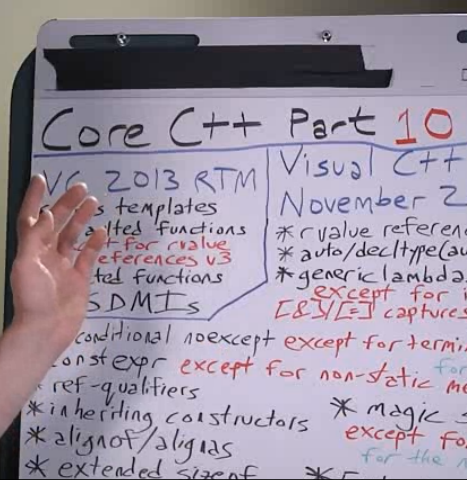Core C++ #10 -- Stephan T. Lavavej

Core C++, 10 of n (Nov 2013 CTP)
by Stephan T. Lavavej
From the summary:
In part 10, STL explores the new features in the Visual C++ Compiler November 2013 CTP (Community Technology Preview), in addition to the features that were added between VC 2013 Preview and RTM.
Features included in the November CTP ( generic lambdas!!! Smiley ):
C++11, C++14, and C++/CX features:
- Implicit move special member function generation (thus also completing
=default)- Reference qualifiers on member functions (a.k.a. "
&and&&for*this")- Thread-safe function local static initialization (a.k.a. "magic statics")
- Inheriting constructors
alignof/alignas__func__- Extended
sizeofconstexpr(except for member functions)noexcept(unconditional)- C++14
decltype(auto)- C++14
autofunction return type deduction- C++14 generic lambdas (with explicit lambda capture list)
- (Proposed for C++17) Resumable functions and
await

 A nice short overview of when you might want your associative container to use a contiguous implementation instead of a tree under the covers:
A nice short overview of when you might want your associative container to use a contiguous implementation instead of a tree under the covers: An interesting question was asked recently on StackOverflow that nicely ties in with Scott Meyers' "Effective C++11/14 Sampler" talk two months ago at GoingNative 2013 and the interestingly named feature
An interesting question was asked recently on StackOverflow that nicely ties in with Scott Meyers' "Effective C++11/14 Sampler" talk two months ago at GoingNative 2013 and the interestingly named feature  The
The